
Note: Dimensions may vary among manufacturers.
Kenneth E. Clark was an accomplished gunsmith who grew up on a cattle ranch near Madera, California. The open country was rich with an assortment of varmints, ranging in size from coyotes to ground squirrels and shots were often taken at extreme distances. Windy days increased the challenge of connecting. After trying rifles chambered for various cartridges, he decided to come up with something better suited for the task at hand.
Due to their hardness, Ken Clark preferred to use Winchester .257 Roberts cases for forming his .224 Clark, but today, 6mm Remington cases work equally well. The (1).257 Roberts case, (2) 6mm Remington case, (3) necked down to .22 caliber and (4) fireformed to the .224 Clark and loaded with the Clark 85-grain deer bullet.
Clark settled on a necked-down, blown-out, sharp-shouldered .257 Roberts case loaded with handmade, .224-inch bullets that were uncommonly long at the time. He called the cartridge the .224 Clark and his varmint bullet weighed 80 grains. Realizing that various .224-caliber centerfire cartridges were quite popular among Texas deer hunters, his 85-grain game bullet was initially of double-jacket construction for expansion control. Later changing it to single-jacket construction improved accuracy with no sacrifice in performance on deer. It is quite unusual for a wildcat cartridge to become popular enough to prompt a major bullet maker to begin producing a bullet specifically for it, but it did happen. Sometime after Clark introduced his cartridge in 1962, Joyce Hornady began offering 80-grain hollowpoints in boxes labeled ".224 Clark HP.”
この記事は Handloader の June - July 2022 版に掲載されています。
7 日間の Magzter GOLD 無料トライアルを開始して、何千もの厳選されたプレミアム ストーリー、9,000 以上の雑誌や新聞にアクセスしてください。
すでに購読者です ? サインイン
この記事は Handloader の June - July 2022 版に掲載されています。
7 日間の Magzter GOLD 無料トライアルを開始して、何千もの厳選されたプレミアム ストーリー、9,000 以上の雑誌や新聞にアクセスしてください。
すでに購読者です? サインイン

OEHLER's New System 89 Chronograph
Measuring Bullet Performance Downrange
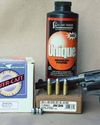
The Problem with Low Pressure Loads
Bullets & Brass
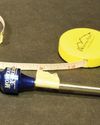
Measurements for Rifle Handloading
Handy Techniques for Accurate Ammunition
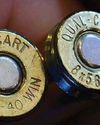
THE BRASS RING
In Range
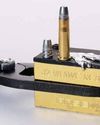
Semi-custom Bullet Moulds
Mike's Shoot in' Shack

REVISITING THE 6.5 -06 A-SQUARE
Loading New Bullets and Powders
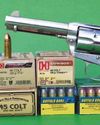
Cimarron Stainless Frontier .45 Colt
From the Hip
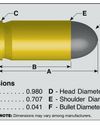
9x18mm Makarov
Cartridge Board
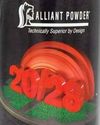
Alliant 20/28
Propellant Profiles
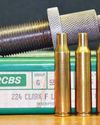
.224 Clark
Wildcat Cartridges